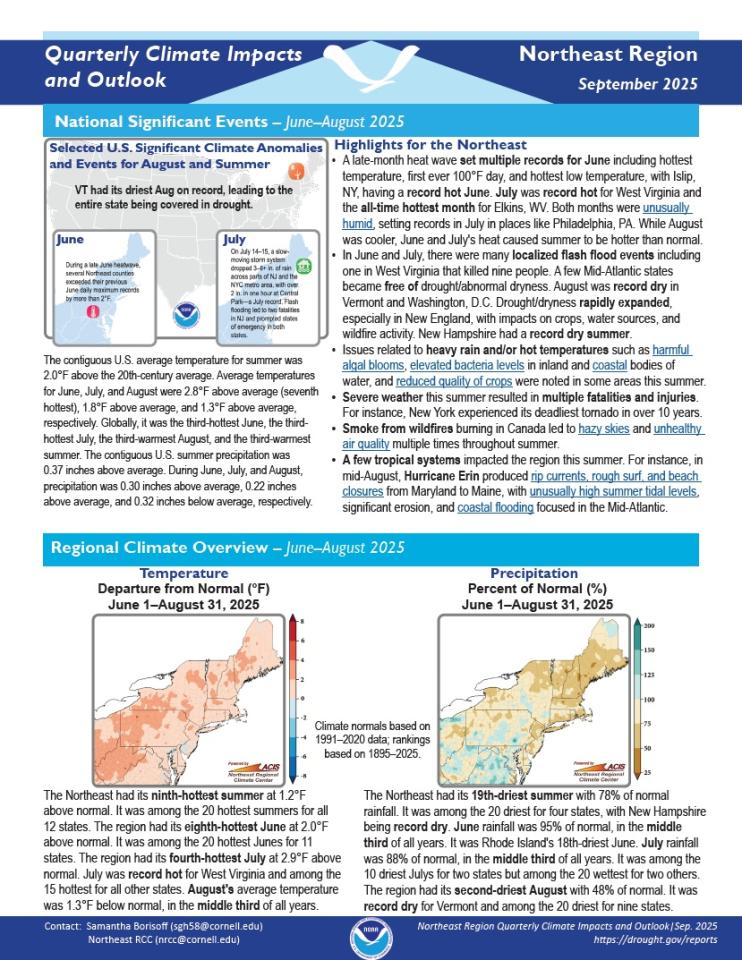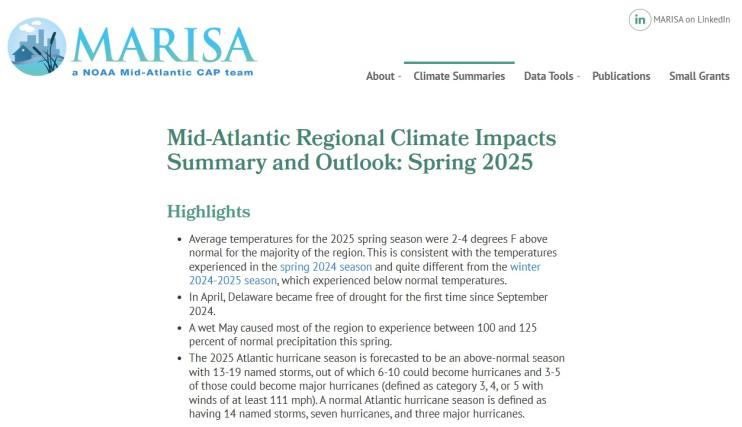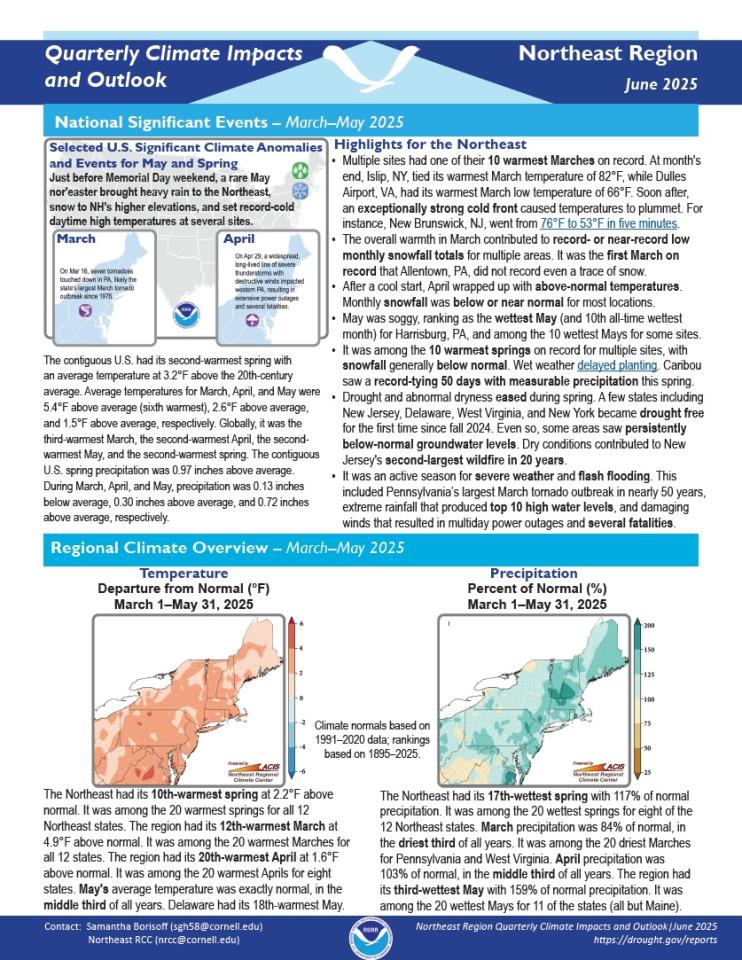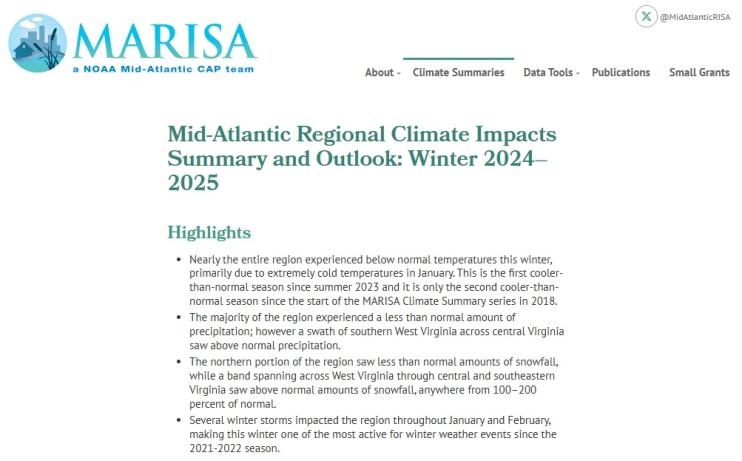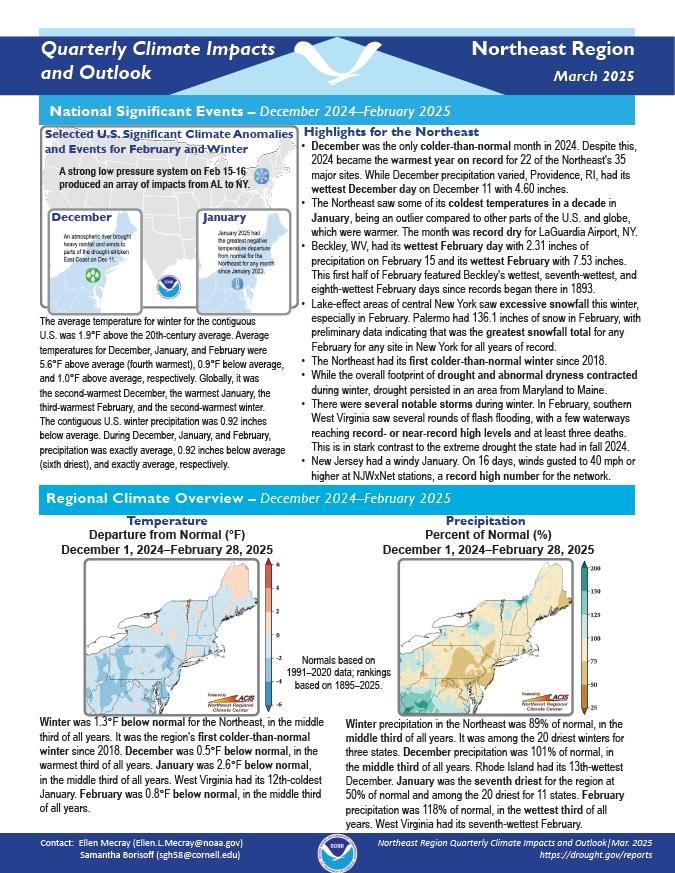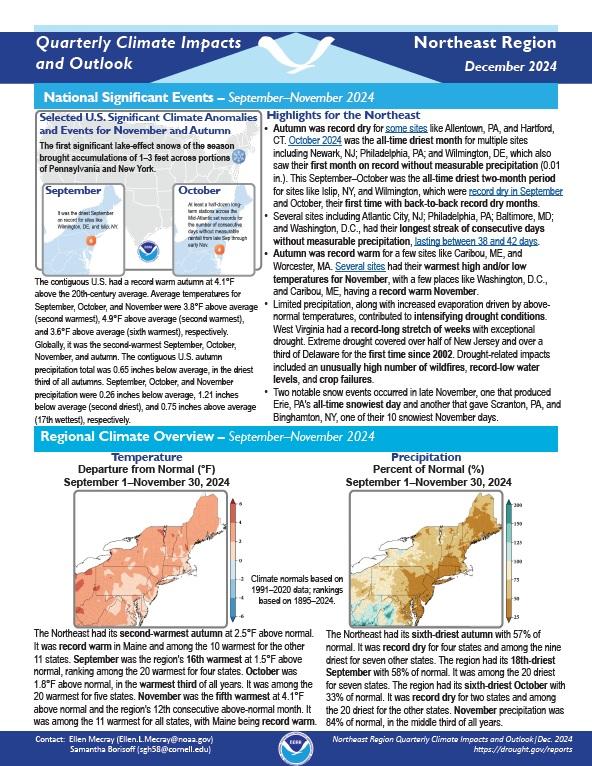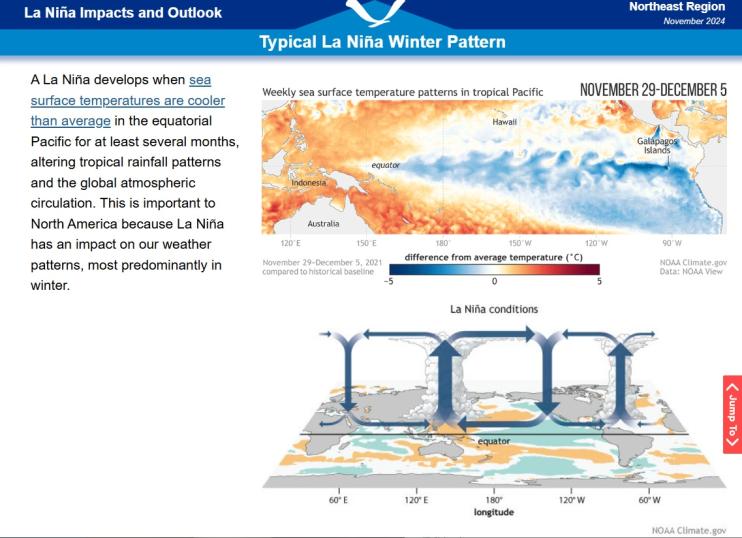For the latest forecasts and critical weather information, visit weather.gov.
Drought has occurred frequently in the Mid-Atlantic states over the past century. Major droughts occurred in the 1930s, 1940s, 1960s, and 1980s, with several lasting for more than a year. In 2024, heat and a lack of rainfall led to widespread drought across Delaware, Maryland, New Jersey, Pennsylvania, Virginia, West Virginia, and the District of Columbia. For some locations, the 2024 drought was the worst the region had experienced in more than two decades.
Quarterly Climate Impacts and Outlook for the Northeast Region for June–August 2025. Dated September 2025.
The Northeast had its ninth-hottest summer at 1.2°F above normal. The Northeast had its 19th-driest summer with 78% of normal rainfall. It was among the 20 driest for four states, with New Hampshire being record dry.
Quarterly Climate Impacts and Outlook for the Mid-Atlantic Region for March–May 2025. Dated June 2025.
Quarterly Climate Impacts and Outlook for the Northeast Region for March–May 2025. Dated June 2025.
The Northeast had its 10th warmest spring on record at 2.2°F above normal. It was among the 20 warmest springs for all 12 Northeast states. The Northeast as a whole had its 17th wettest spring with 117% of normal precipitation. It was among the 20 wettest springs for 8 of the 12 Northeast states.
Quarterly Climate Impacts and Outlook for the Mid-Atlantic Region for December 2024–February 2025. Dated March 2025.
Quarterly Climate Impacts and Outlook for the Northeast Region for December 2024–February 2025. Dated March 2025.
Winter was 1.3°F below normal for the Northeast, in the middle third of all years. It was the region's first colder-than-normal winter since 2018. Winter precipitation in the Northeast was 89% of normal, in the middle third of all years. It was among the 20 driest winters for three states.
Quarterly Climate Impacts and Outlook for the Mid-Atlantic Region for September–November 2024. Dated December 2024.
Average temperatures for the 2024 fall season were 2-4 °F above normal for most of the Mid-Atlantic region. Eastern portions of the region received only 25%–50% of normal precipitation. Only portions of southern and western Virginia and southeastern West Virginia saw above-normal precipitation.
Quarterly Climate Impacts and Outlook for the Northeast Region for September–November 2024. Dated December 2024.
The Northeast had its second-warmest autumn at 2.5°F above normal. It was record warm in Maine and among the 10 warmest for the other 11 states. The Northeast had its sixth-driest autumn with 57% of normal. It was record dry for four states and among the nine driest for seven other states.
This web page provides information on the typical La Niña winter pattern; the La Niña outlook; potential winter and spring impacts; and comparisons of conditions during previous La Niña years for the Northeast region. Updated November 2023.
NOAA’s Regional Climate Services Program created these Outlooks to inform the public about climate impacts within their respective regions. Each regional report contains easy-to-understand language, and anyone can access them through the U.S. Drought Portal.



